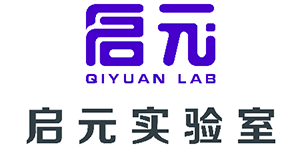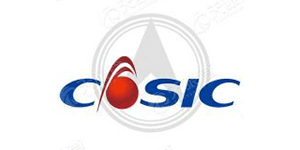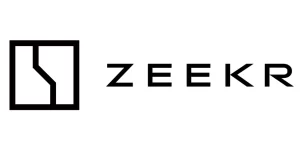


put forward
Is fNIRS highly sensitive to the normal human brain in terms of both cognitive state and load?Is there sufficient sensitivity to detect changes in cognitive load and changes in brain functional connectivity during transitions from resting to task states?



Experimental procedure



Participant screening
Sixteen Georgetown University undergraduates (6 males; 1 left-handed), ranging in age from 18 to 24 years, had a mean age of 20.3 years.
Participants did not use psychotropic medications and had no history of neurologic injury or disease, epilepsy, or psychiatric diagnosis.
All participants signed informed consent forms under the guidelines of the Georgetown University Institutional Review Board.
Mission design
The experiment consisted of a 10-minute resting-state scan followed by a 6.5-minute n-back task.
In the n-back task, a series of single consonant letters are presented in front of the participant, and the participant needs to press a button when the current letter is the same as the letter preceding the n letters.
Participants were tested on three different cognitive load conditions (1-back, 2-back, and 3-back), each containing three blocks.Each block contained 9 trials, each lasting 3000 ms, with letters displayed for 500 ms, followed by a 2500 ms interval.Each block was followed by a fixed interval of 14 seconds to allow the hemodynamic response to return to baseline levels.
Prior to the formal experiment, participants practiced the n-back task.
imaging process
The fNIRS was recorded using a dual wavelength (690 and 830 nm) continuous wave CW5 imaging system (TechEn, Inc., Milford, MA).
Data were collected in parallel from the detectors at a sampling rate of 41.7 kHz, with each laser modulated at a different frequency, allowing subsequent offline demodulation and separation of source-detector pairs (i.e., channels).
The 40 optical channels consisted of 12 light sources and 29 detectors in 50 channels covering bilateral parietal cortex, bilateral prefrontal cortex, and frontal pole.
Data preprocessing
Data were low-pass filtered through a high-order (400) FIR filter at a cutoff frequency of 0.8 Hz and downsampled to 20 Hz.The raw optical density signal was converted to hemoglobin concentration changes using a modified Beer-Lambert law.
data analysis



Channel time series were modeled in NIRS-SPM using a general linear model (GLM). For functional connectivity analysis, the data were band-passed at 0.01-0.10 Hz to match the functional resting-state network found in the fMRI study. For load-dependent functional connectivity, Pearson correlation coefficients were calculated between all channels and Fisher's r-to-z transformation was applied to normalize the variance of the correlation values.
For state-dependent functional connectivity, differences between resting state and n-back acquisition were compared.
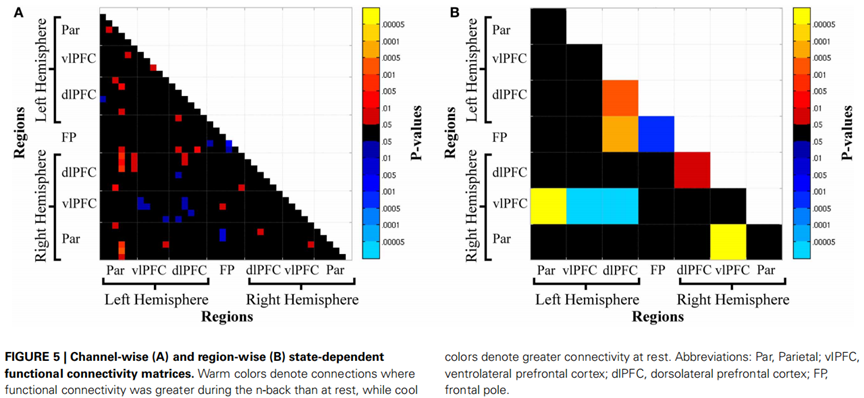


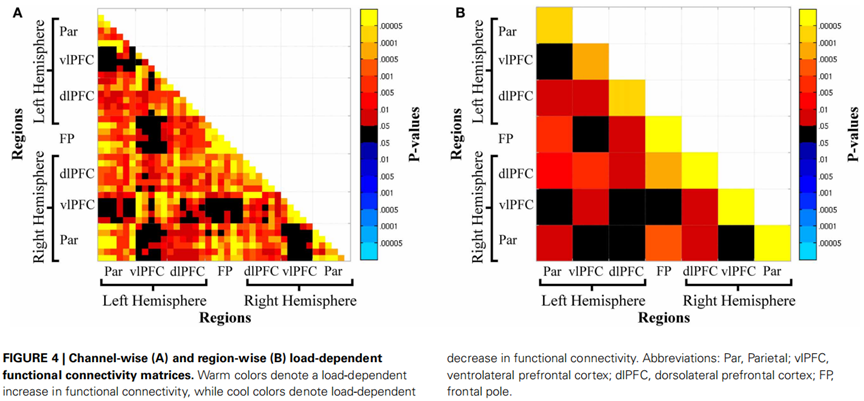


The fNIRS is highly sensitive in detecting changes in cognitive load. fNIRS is sensitive not only to cognitive load but also to changes in cognitive state.
In the bilateral prefrontal cortex, particularly the dorsolateral prefrontal cortex (dIPFC), increased activation was linearly related to increased working memory load. As n-back task load increased, activation was stronger in the left hemisphere and functional connectivity between prefrontal and parietal cortex increased.
In addition, connectivity on the ipsilateral and contralateral dorsolateral prefrontal cortex (dPFC) was increased between the dorsolateral prefrontal cortex (dPFC). These changes suggest that working memory tasks require coordination between prefrontal and parietal cortex. Functional connectivity between prefrontal cortex was higher in the resting state than in the task-execution state, whereas functional connectivity between prefrontal cortex and parietal cortex was higher in the task-execution state. This may reflect a reorganization of functional connectivity during task execution.
summarize
The results suggest that fNIRS is a suitable imaging technique for exploring neuroimaging research questions and can be a viable alternative to fMRI, especially in clinical and pediatric populations. fNIRS' low cost, non-invasiveness, resistance to head movements, and low sensitivity to sound make it particularly suitable for use in pediatric populations, including those with developmental disabilities. .
CITE
cited document
Fishburn FA, Norr ME, Medvedev AV, Vaidya CJ. Sensitivity of fNIRS to cognitive state and load. Front Hum Neurosci. 2014 Feb 20;8:76.
doi: 10.3389/fnhum.2014.00076.
PMID: 24600374.
PMCID: PMC3930096.
Cortivision Wireless Portable Near Infrared Optical Brain Imaging System
![]()
![]()
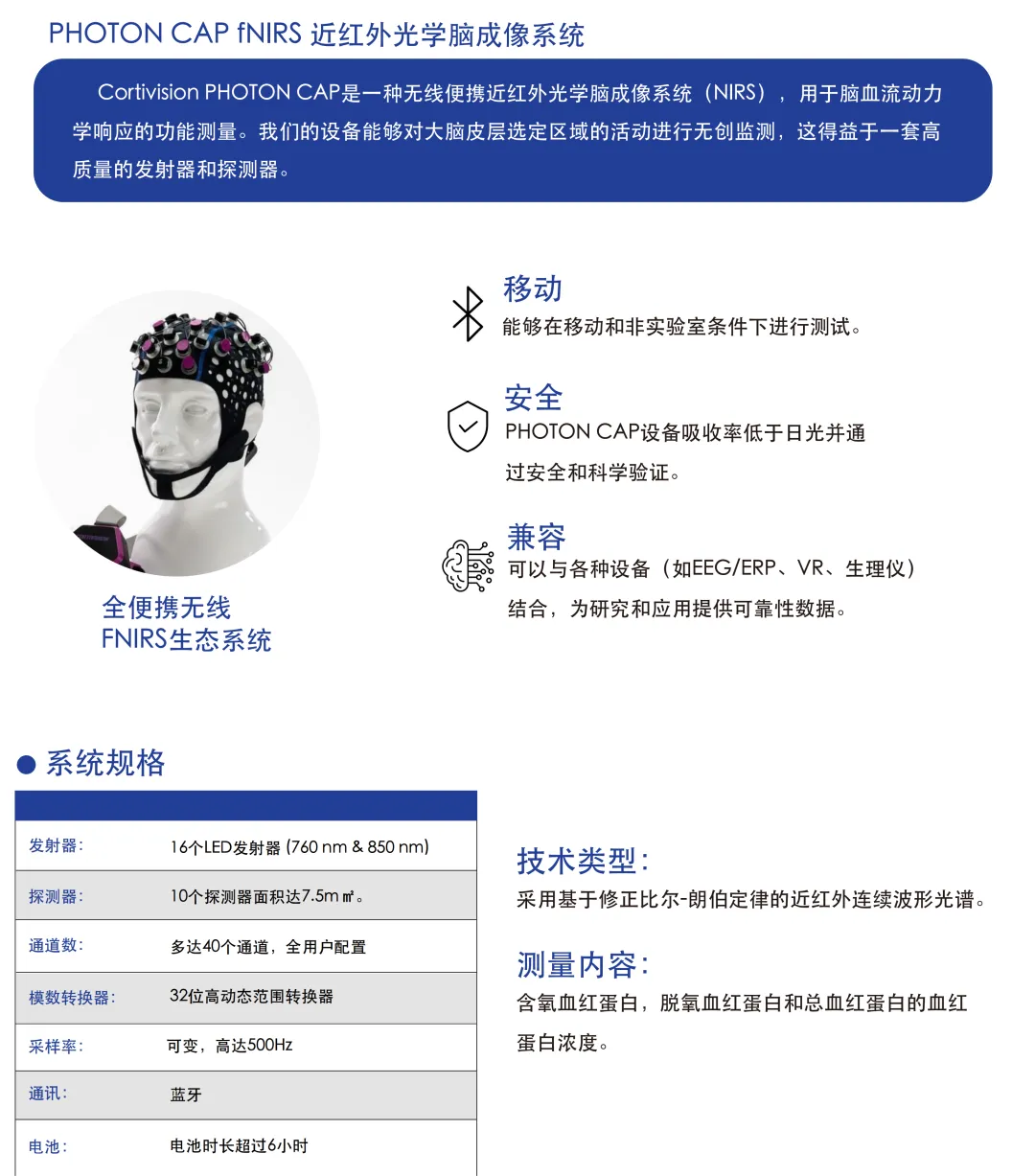


Company Profile
Ltd, invested by Zhongke (Guangdong) Science Group and relying on Guangdong Human Factors Technology Research Institute and Wuhan Human Factors Engineering Technology Research Institute, is a new type of high-tech enterprise based on the direction of psychological human factors, driving human factors, biomechanics, user experience, virtual reality and other directions, integrating production, research and development, sales and technical services, and has been selected as a national high-tech enterprises, science and technology-based Small and Medium-sized Enterprises (SMEs) and Zhongguancun High-tech Enterprises.



Hengzhi Technology independently researches and develops driving human factors system, virtual reality graphical editing software, light environment psychological assessment system, psychological and human factors experimental teaching system, and at the same time as the general agent of Poland Cortivision near infrared, Russia Mitsar EEG and Germany Eyelogic eye movement instrument in China, Italy BTS surface electromyography and other biomechanics and gait analysis scientific research products general agent. Canada AdHawk Mindlink high sampling eyeglasses eye-tracker, Germany QuaeroSys tactile stimulation system, the Netherlands Noldus behavioral science, Sweden Tobii eye-tracker, the Netherlands MindMedia physiological andbiofeedbackThe company is the agent of American Biopac physiology, American ETT olfactory/taste stimulator and other products. We have served Tsinghua University, Peking University, Beijing Normal University, Northeast Normal University, Yanshan University, Xi'an University of Architecture and Technology, Northwest Agriculture and Forestry University, Shenzhen University of Technology, Xi'an University of Science and Technology, Shanghai Jiaotong University, Xinjiang Normal University, Qiyuan Laboratory, China Electronics Technology Group 27, China Electronics Technology Group 28, Huawei Technology, Inkjet Weather, NetEase, the Second Academy of Astronautics and so on. Thousands of colleges and universities, research institutes and enterprises and institutions continue to carry out in-depth cooperation in talent cultivation, production and research cooperation, and transformation of achievements.





























